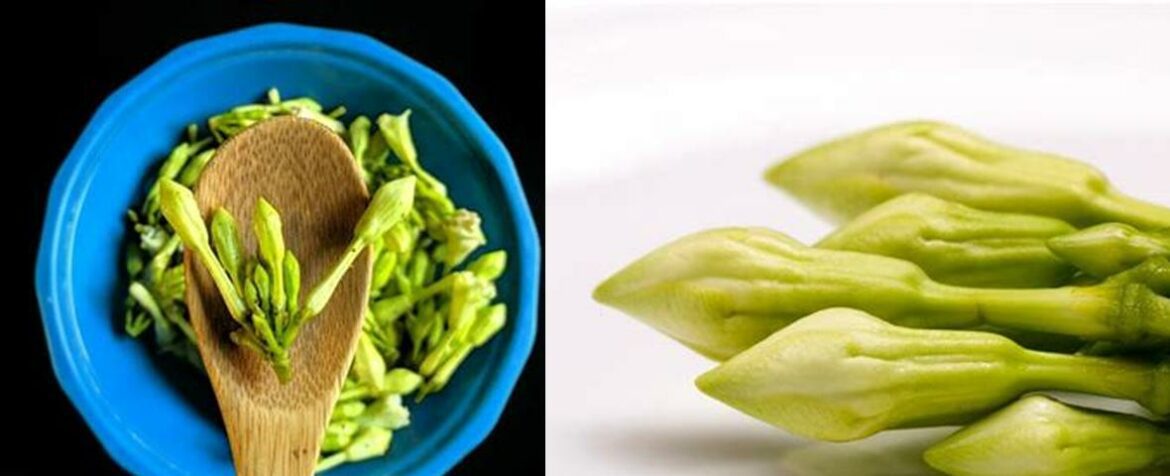What Does Loroco Taste Like – Embark on a tantalizing adventure into the world of flavors with loroco, the enigmatic edible blossom that has captured the taste buds of many. Have you ever wondered what this intriguing ingredient tastes like? Prepare to be amazed as we unravel the secrets behind the unique and enriching taste of loroco. Whether you’re a culinary enthusiast or simply curious about exploring new flavors, this blog post will quench your thirst for knowledge and leave you craving for more. So, fasten your seatbelts and get ready to dive into the delectable world of loroco. Get ready to taste the extraordinary!
A Culinary Journey into the Enigmatic Flavors of Loroco: Unveiling the Essence of an Enriching Edible Blossom
Embarking on a culinary exploration of the captivating loroco flower, a delicacy native to Central and South American cuisine, we delve into its unique flavor profile that has tantalized taste buds for generations. This remarkable edible blossom boasts a distinctive taste that defies simple categorization, inviting adventurous palates to unravel its intricate tapestry of flavors.
Earthy Nuances and a Burst of Acidity: Unraveling Loroco’s Taste Sensations
At its core, loroco possesses an earthy, woody undertone reminiscent of damp forest floors and freshly turned soil. This grounding flavor is complemented by a burst of acidity, akin to tart citrus fruits, providing a refreshing contrast that awakens the senses. The overall taste experience is further enriched by a grassy note, reminiscent of freshly cut hay, adding a layer of complexity to this culinary enigma.
Preparation and Preservation: Unveiling the Art of Loroco Gastronomy
The preparation and preservation methods employed can significantly influence the taste of loroco. Fresh or dried loroco blossoms offer the most pronounced flavor, with their intense earthy and acidic notes taking center stage. However, freezing, brining, or pickling can subdue these flavors, resulting in a milder, more muted taste profile.
Culinary Versatility: Exploring Loroco’s Culinary Horizons
Loroco’s versatility shines through its ability to seamlessly integrate into diverse culinary creations. Its unique flavor profile lends itself to a wide range of dishes, from traditional Central and South American fare to innovative fusion cuisine. Whether incorporated into pupusas, the quintessential Salvadoran dish, or gracing cream sauces with its tart complexity, loroco adds a touch of intrigue to every culinary adventure.
Complementary Ingredients: Elevating Loroco’s Culinary Appeal
Loroco’s culinary prowess is further enhanced when paired with compatible ingredients that harmonize and elevate its flavors. Eggs, with their rich and creamy texture, provide a perfect canvas for loroco’s acidity to shine through. Zucchini’s mild flavor allows loroco’s earthy notes to take center stage, while cotija cheese’s salty tanginess creates a delightful interplay of flavors. Seafood’s briny essence complements loroco’s tartness, while mozzarella’s gooey stretchiness adds a textural contrast that delights the palate.
Nutritional Riches: Unveiling Loroco’s Health-Promoting Properties
Beyond its captivating taste, loroco boasts an impressive nutritional profile, making it a culinary delight with added health benefits. This edible flower is a rich source of calcium, essential for maintaining strong bones and teeth. Its dietary fiber content promotes a healthy digestive system, while its iron content supports the production of red blood cells, carrying oxygen throughout the body. Additionally, loroco contains antioxidants, which help protect cells from damage caused by free radicals.
Availability and Accessibility: Discovering Loroco’s Culinary Treasures
While fresh loroco may be elusive outside of Central and South America, canned, jarred, or pickled loroco can be found in some Mexican stores, offering a taste of this culinary gem to a wider audience. However, it’s crucial to note that the root of the loroco plant is poisonous, emphasizing the importance of consuming only the edible flowers.
Through this culinary voyage, we’ve explored the enigmatic flavors of loroco, an edible flower that has captivated taste buds for generations. Its distinct earthy, woody, grassy, acidic, and tart notes make it a versatile ingredient with endless culinary possibilities. Whether enjoyed fresh, dried, or preserved, loroco’s unique flavor profile adds a touch of intrigue to any dish, while its nutritional value makes it a healthy addition to a balanced diet. As we continue our culinary adventures, let’s embrace the diversity of flavors that the world has to offer, unlocking the secrets of ingredients like loroco that elevate our culinary experiences to new heights.
FAQ about Loroco’s Taste
Q: What does loroco taste like?
A: Loroco has an earthy, woody undertone with hints of damp forest floors and freshly turned soil. It also has a burst of acidity, similar to tart citrus fruits, and a grassy note reminiscent of freshly cut hay.
Q: How would you describe the overall taste experience of loroco?
A: The overall taste experience of loroco is a combination of earthy, woody, grassy, acidic, and tart notes. It is a versatile ingredient that adds complexity and intrigue to any dish.
Q: What are some complementary ingredients that pair well with loroco?
A: Loroco pairs well with ingredients such as eggs, zucchini, cotija cheese, seafood, and mozzarella. These ingredients harmonize and elevate the flavors of loroco in various culinary creations.
Q: Can loroco be used in traditional Central and South American dishes?
A: Yes, loroco is commonly used in traditional Central and South American dishes, such as pupusas. It adds a touch of intrigue and enhances the flavor profile of these dishes.
Q: Is loroco a healthy addition to a balanced diet?
A: Yes, loroco is a healthy addition to a balanced diet. It not only adds flavor to dishes but also provides nutritional value.
Q: How can loroco be used in cooking?
A: Loroco can be enjoyed fresh, dried, or preserved. It can be incorporated into a wide range of dishes, from traditional Central and South American fare to innovative fusion cuisine. It can be used in pupusas, cream sauces, and many other culinary creations.


